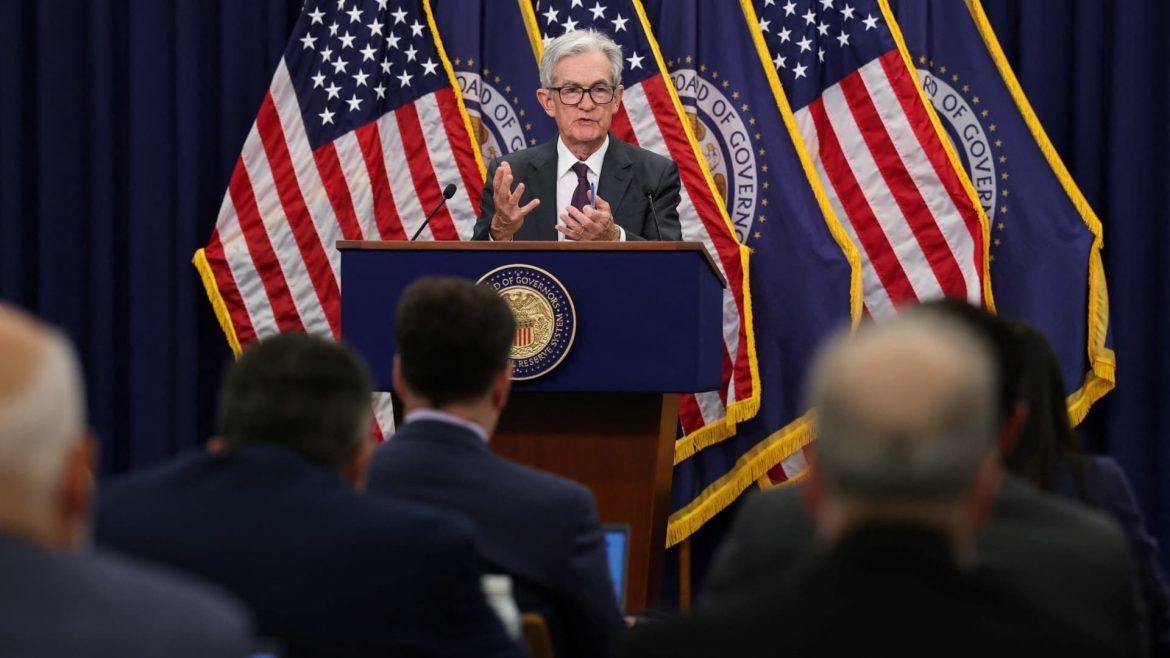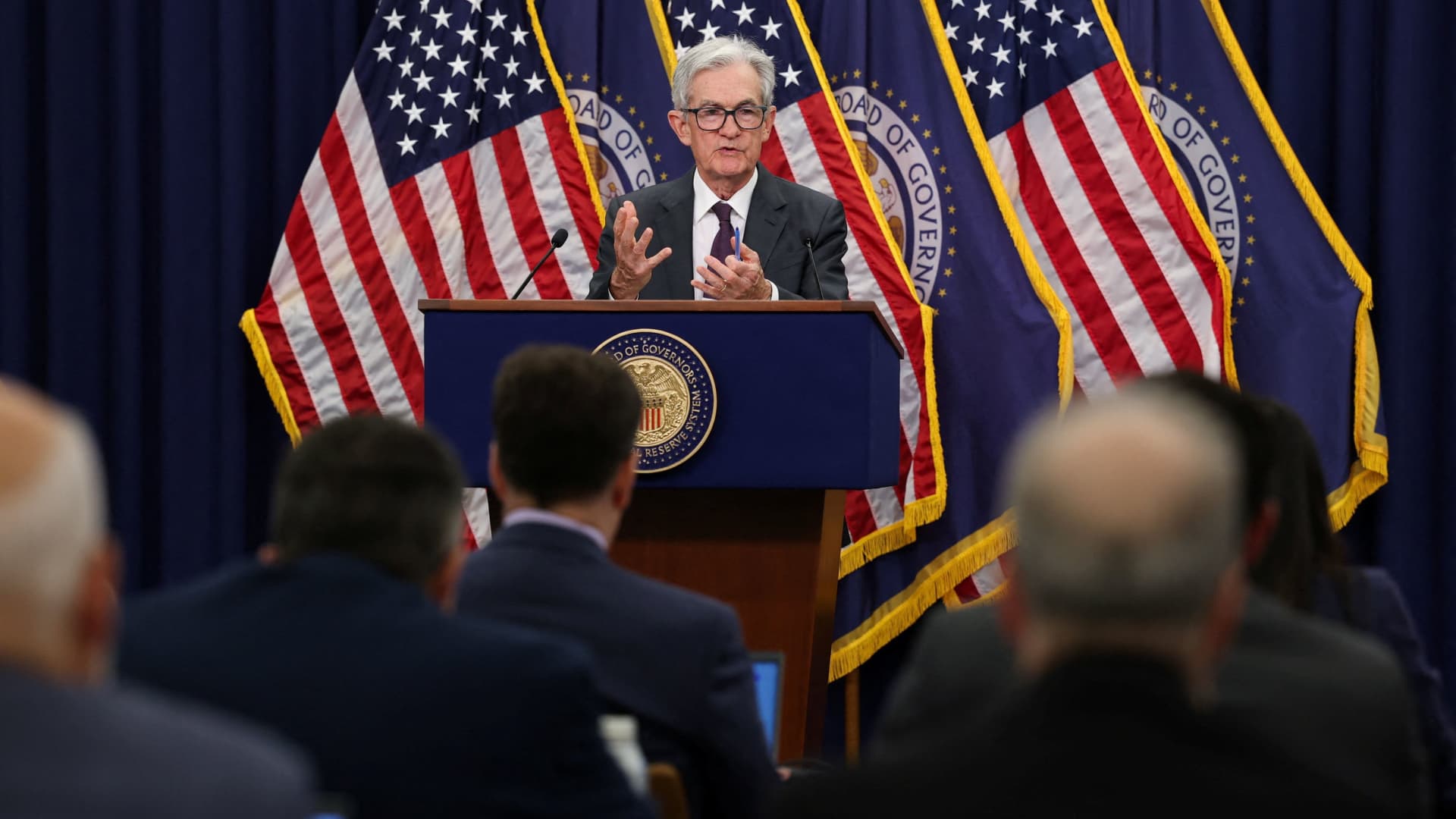Navigating the Economic Tightrope: A Critical Analysis of Jim Cramer’s Stance on Fed Policy and Jerome Powell
Introduction: The Cramer-Powell Dynamic in a Turbulent Economy
In the ever-evolving landscape of economic policy and financial markets, few figures are as vocal and influential as Jim Cramer, the charismatic host of CNBC’s “Mad Money.” Cramer’s commentary on the Federal Reserve and its chair, Jerome Powell, offers a unique lens through which to examine the intricate dance between monetary policy, economic data, and market sentiment. His opinions, often delivered with a blend of urgency and insight, reflect a deep engagement with the challenges facing the U.S. economy. This report explores Cramer’s evolving perspectives on Powell and the Fed’s monetary policy, providing a critical analysis of his calls for rate cuts, his assessments of Powell’s performance, and the broader implications of their contrasting views.
The Urgent Call for Rate Cuts: A Reaction to Weakening Jobs Data
Cramer’s recent emphasis on the need for the Federal Reserve to cut interest rates is rooted in his interpretation of economic data, particularly the labor market. Following a jobs report that Cramer described as “surprisingly lackluster,” he argued that the Fed should act swiftly to lower rates. His reasoning is based on the minimal job growth and stagnant wages reported, which he believes signal a slowing economy. This stance aligns with Keynesian economic principles, which advocate for government intervention, including monetary policy adjustments, to stimulate demand during economic downturns.
Cramer’s urgency reflects a broader concern that the economy may be on the precipice of a more significant slowdown. He worries that the Fed’s high interest rates, intended to combat inflation, could be stifling economic activity and preventing businesses from expanding and hiring. His commentary underscores the delicate balancing act the Fed must perform between controlling inflation and promoting employment. By calling for rate cuts, Cramer is advocating for a policy shift that prioritizes economic growth and job creation over the potential risks of inflation.
Assessing Powell’s Performance: A Rollercoaster of Opinions
Cramer’s views on Jerome Powell have been far from consistent, oscillating between praise and criticism depending on the prevailing economic conditions and the Fed’s policy decisions. At times, Cramer has lauded Powell, even referring to him as “the People’s Fed Chief,” particularly when he perceived Powell as prioritizing employment and showing concern for the impact of monetary policy on minority communities. This positive assessment suggests that Cramer values a Fed chair who is attuned to the broader social implications of economic policy.
However, Cramer has also been sharply critical of Powell, particularly when he believes the Fed is making policy errors. He has, at various times, accused Powell of being too slow to address inflation, of raising rates too aggressively, and of misinterpreting economic data. This fluctuating assessment of Powell reflects the inherent challenges of leading the Federal Reserve in a complex and unpredictable economic environment. The Fed must make difficult decisions based on imperfect information, and its policies inevitably face scrutiny and second-guessing from economists, market analysts, and commentators like Jim Cramer.
The Political Dimension: Navigating Trump’s Criticism and Market Expectations
The relationship between the Federal Reserve and the White House has often been strained, particularly during Donald Trump’s presidency. Trump frequently attacked Powell and the Fed for raising interest rates, arguing that they were hindering economic growth. Cramer has weighed in on this dynamic, sometimes agreeing with Trump’s concerns about the impact of rate hikes, but also cautioning against political interference in the Fed’s decision-making process.
Cramer has argued that firing Powell would only hurt Trump, suggesting that maintaining the Fed’s independence is crucial for market stability and investor confidence. This perspective highlights the delicate balance between political pressures and the need for the Fed to operate without undue influence. Moreover, Cramer has pointed out that markets may ignore political noise, indicating that the Fed’s credibility ultimately rests on its ability to make sound economic judgments, regardless of political commentary.
The Broader Economic Context: Inflation, Recession, and the Services Sector
Cramer’s commentary often reflects broader concerns about the state of the U.S. economy. He has warned of a potential recession, particularly in light of rising interest rates and global economic headwinds. He has also expressed concern about the impact of economic policies on specific sectors, such as the service industry, which he believes may require additional stimulus to recover fully.
Cramer’s analysis often incorporates a sector-specific approach, recognizing that different parts of the economy may experience varying degrees of strength or weakness. This nuanced perspective underscores the importance of considering the diverse impacts of monetary policy and fiscal stimulus. By highlighting the potential vulnerabilities in the services sector, Cramer is advocating for a more targeted and adaptive approach to economic policy, one that addresses the unique challenges facing different industries.
Original Material and Facts: A Synthesis of Economic Data and Market Sentiment
Cramer’s pronouncements are often based on a blend of economic data, market analysis, and his own observations of investor sentiment. His analysis of the jobs report, for example, combines statistical data on employment growth with his assessment of the market’s reaction to the news. This approach allows him to provide a more holistic and timely perspective on the economic landscape.
Furthermore, Cramer often draws on his extensive experience in the financial industry to provide insights into the behavior of investors and the dynamics of the stock market. His commentary reflects a deep understanding of the interplay between economic fundamentals and market psychology. By synthesizing economic data with market sentiment, Cramer offers a unique perspective that combines objective analysis with an understanding of the human factors that drive economic decisions.
The Bottom Line: A Call for Prudent and Adaptive Monetary Policy
Jim Cramer’s analysis of the Federal Reserve and Jerome Powell underscores the importance of prudent and adaptive monetary policy. His calls for rate cuts, his fluctuating assessments of Powell’s performance, and his concerns about the broader economic context all point to the need for the Fed to carefully calibrate its policies to address the evolving challenges facing the U.S. economy.
Cramer’s advocacy for rate cuts is based on his interpretation of economic data and his concern for the potential negative impacts of high interest rates on economic growth and employment. His fluctuating assessments of Powell reflect the complexities of leading the Federal Reserve in a dynamic and uncertain economic environment. His broader economic analysis highlights the need for targeted and adaptive policies that address the unique challenges facing different sectors of the economy.
Conclusion: The Economic Oracle and the Fed’s Tightrope Walk
Jim Cramer’s role as an economic commentator is to provoke thought and stimulate debate about the direction of the economy and the policies needed to ensure its health. While his opinions may not always be universally embraced, they serve as a valuable reminder of the complexities and uncertainties that policymakers face. As the Fed navigates the delicate balance between controlling inflation and promoting economic growth, the voices of commentators like Jim Cramer will continue to play a vital role in shaping the public discourse and holding policymakers accountable.
Cramer’s commentary offers a unique perspective on the challenges facing the U.S. economy and the Federal Reserve. His calls for rate cuts, his assessments of Powell’s performance, and his broader economic analysis all contribute to a richer understanding of the economic landscape. As the Fed continues to walk the tightrope of monetary policy, the insights and opinions of commentators like Jim Cramer will remain an important part of the ongoing conversation about the future of the economy.





